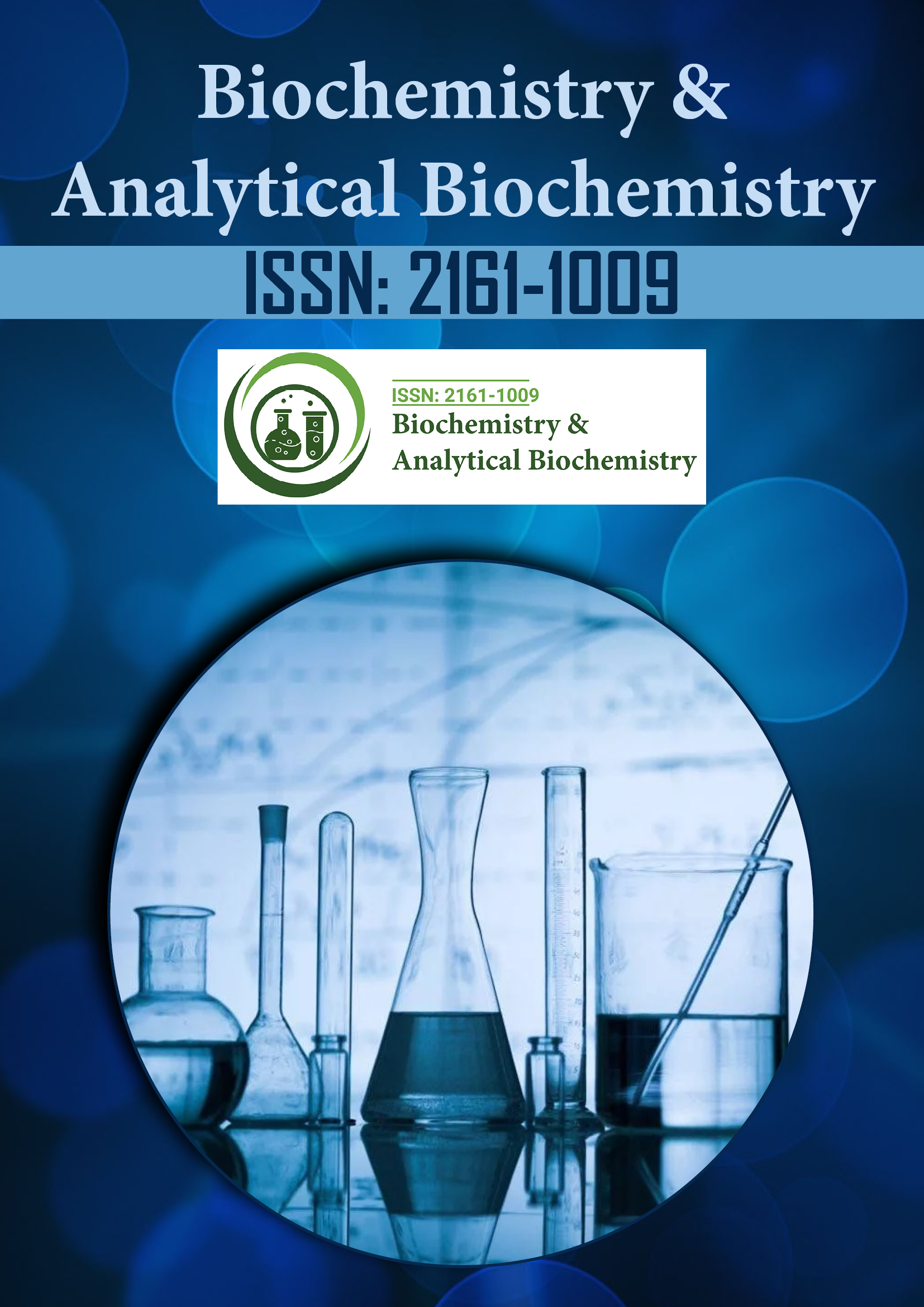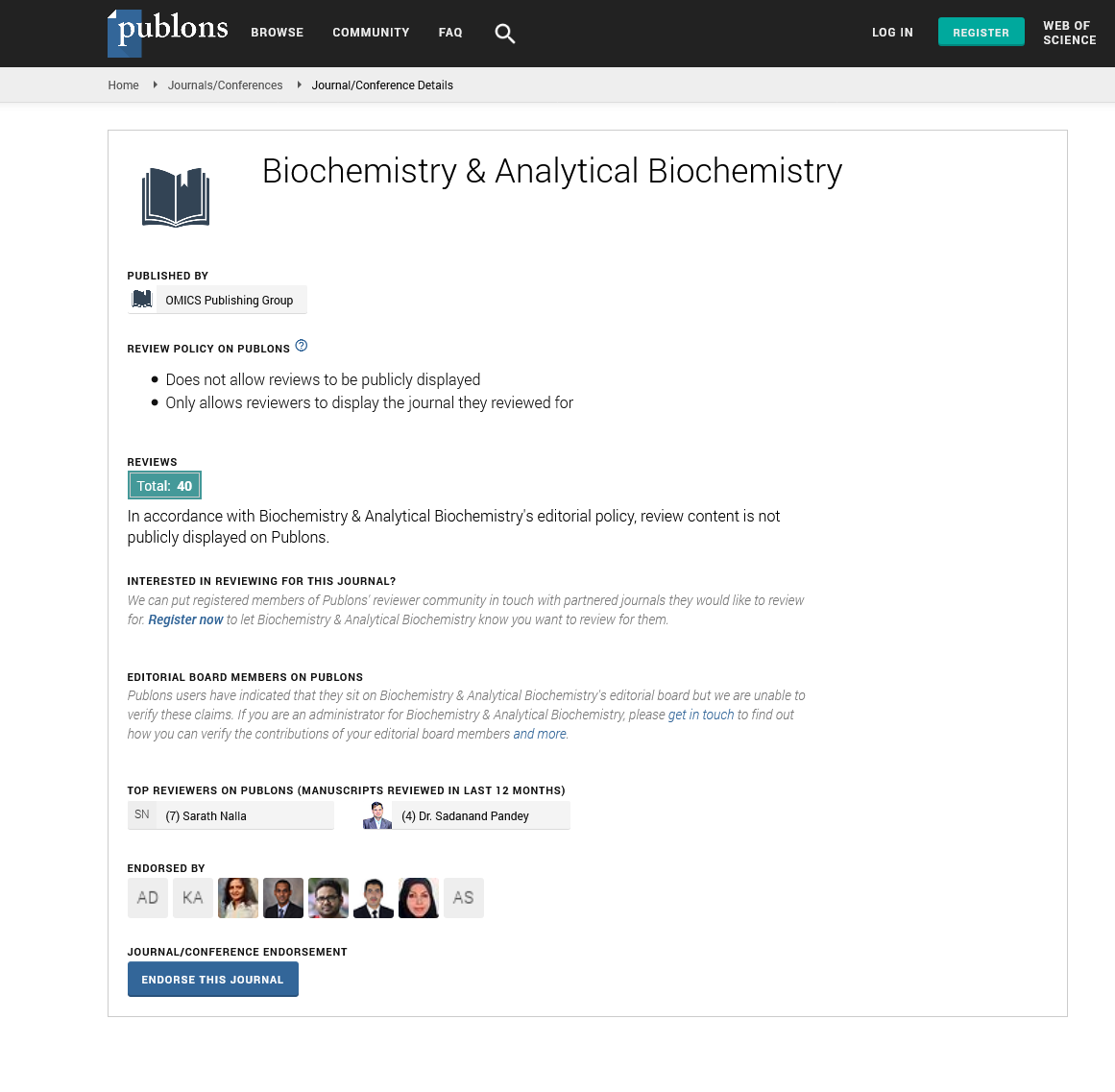Indexed In
- Open J Gate
- Genamics JournalSeek
- ResearchBible
- RefSeek
- Directory of Research Journal Indexing (DRJI)
- Hamdard University
- EBSCO A-Z
- OCLC- WorldCat
- Scholarsteer
- Publons
- MIAR
- Euro Pub
- Google Scholar
Useful Links
Share This Page
Journal Flyer

Open Access Journals
- Agri and Aquaculture
- Biochemistry
- Bioinformatics & Systems Biology
- Business & Management
- Chemistry
- Clinical Sciences
- Engineering
- Food & Nutrition
- General Science
- Genetics & Molecular Biology
- Immunology & Microbiology
- Medical Sciences
- Neuroscience & Psychology
- Nursing & Health Care
- Pharmaceutical Sciences
Perspective - (2025) Volume 14, Issue 2
Emerging Frontiers in Lipidomics: Understanding Cellular Membrane Complexity
Hiroshi Tanaka*Received: 30-May-2025, Manuscript No. BABCR-25-29496; Editor assigned: 02-Jun-2025, Pre QC No. BABCR-25-29496 (PQ); Reviewed: 16-Jun-2025, QC No. BABCR-25-29496; Revised: 23-Jun-2025, Manuscript No. BABCR-25-29496 (R); Published: 30-Jun-2025, DOI: 10.35248/2161-1009.25.14.580
Description
Lipidomics, the large-scale study of lipids within biological systems, has rapidly evolved into a powerful discipline within analytical biochemistry. While proteins and nucleic acids have long dominated the spotlight in molecular biology, lipids have increasingly gained recognition for their vital roles in cellular structure, signaling, and metabolism. The diversity of lipid molecules is immense, ranging from phospholipids and sphingolipids to sterols and glycerolipids, each performing specialized roles in biological membranes and regulatory processes. Advances in mass spectrometry and chromatography have propelled lipidomics to the forefront of biochemical research, enabling scientists to unravel the complexity of lipid networks and their implications for health and disease.
One of the most fascinating aspects of lipidomics is its ability to shed light on the organization and dynamics of cellular membranes. Far from being inert barriers, membranes are dynamic structures enriched with lipid microdomains, often referred to as lipid rafts. These rafts serve as platforms for receptor clustering, signal transduction, and protein trafficking. Lipidomics has revealed how subtle alterations in lipid composition can profoundly affect membrane fluidity, curvature, and protein interactions, thereby influencing a wide range of cellular processes. Analytical tools such as Liquid Chromatography-Mass Spectrometry (LC-MS) and ion mobility spectrometry have made it possible to detect thousands of lipid species simultaneously, offering an unprecedented view of membrane complexity.
The clinical relevance of lipidomics is increasingly evident. In neurobiology, sphingolipid dysregulation has been implicated in multiple sclerosis and Alzheimer’s disease, while abnormal cholesterol metabolism is associated with both cardiovascular disease and neurodegeneration. Lipidomic profiling can identify biomarkers for early detection of these conditions, as well as monitor disease progression and treatment response. In metabolic diseases such as obesity and diabetes, lipidomics provides valuable insights into disrupted lipid signaling pathways that underlie insulin resistance and inflammation. Cancer research has also benefited from lipidomics, as tumor cells often exhibit unique lipid signatures that support rapid proliferation and metastasis.
Beyond human health, lipidomics plays a critical role in microbiology and plant biology. In bacteria, lipid composition affects antibiotic resistance and pathogenicity. Understanding bacterial lipid metabolism can inform the development of new antimicrobial agents. In plants, lipidomics is essential for studying responses to environmental stress, such as drought, heat, or pathogen attack. Plant lipid profiling enables the identification of lipid biomarkers linked to resilience, aiding crop improvement efforts. Food science is another area where lipidomics has practical applications, from quality control of edible oils to detection of adulteration and spoilage.
Despite remarkable progress, lipidomics faces significant challenges. Unlike proteins or nucleic acids, lipids lack a universal backbone structure, making their classification and identification more complex. The vast chemical diversity of lipids, combined with differences in ionization efficiency, complicates quantitative analysis. Moreover, lipid concentrations can be highly dynamic, varying with diet, circadian rhythms, and environmental conditions, which complicates reproducibility. To overcome these challenges, researchers are developing standardized protocols, advanced bioinformatics pipelines, and integrative approaches that combine lipidomics with genomics, proteomics, and metabolomics. Such systems-level analyses will provide holistic insights into the role of lipids in health and disease.
Looking ahead, the future of lipidomics lies in high-resolution imaging techniques, such as mass spectrometry imaging, which can map lipid distributions within tissues at cellular or even subcellular resolution. This spatial dimension will reveal how lipid organization contributes to processes like synaptic transmission, immune responses, and tumor microenvironment dynamics. Integration with machine learning will further accelerate lipid identification and interpretation, allowing researchers to navigate vast datasets with greater accuracy. Clinical translation is another promising direction, as lipidomic biomarkers move closer to routine use in precision medicine.
In summary, lipidomics has emerged as a frontier discipline that reshapes our understanding of cellular complexity. By revealing the structural and functional diversity of lipids, it highlights their central role in health, disease, and environmental adaptation. While technical challenges remain, ongoing innovations in analytical chemistry, bioinformatics, and systems biology promise to elevate lipidomics to new heights. As biochemistry advances into the era of integrative omics, lipidomics will remain an indispensable tool for decoding the intricate language of cellular membranes.
Citation: Tanaka H (2025). Emerging Frontiers in Lipidomics: Understanding Cellular Membrane Complexity. Biochem Anal Biochem. 14:580.
Copyright: © 2025 Tanaka H. This is an open access article distributed under the terms of the Creative Commons Attribution License, which permits unrestricted use, distribution, and reproduction in any medium, provided the original author and source are credited.

